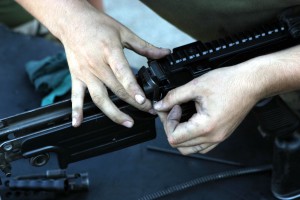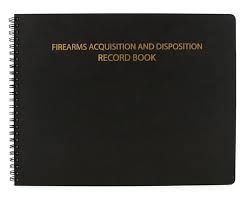By: JR Valdes Firearms Licensing And Consulting Group, LLC
Gunsmith / Dealer Records Keeping Separate Books
Gunsmith record keeping requirements vary slightly from the normal requirements for a dealer in firearms. As a Type 01 (Dealer) FFL, a gunsmith must maintain the ATF required gun log (record of acquisition and disposition) of firearms. However, the entries in the gunsmith record book will generally reflect the acquisition of firearms and the return of the firearm to the same person. Many gunsmiths, especially those working directly for a retailer, will use a specific gunsmith log book separate from the retail gun log book (A&D Record) in use for routine retail firearm dispositions.
Differences in ATF Record Keeping Requirements
The principal difference between the ATF record keeping requirements for a dealer and a gunsmith is that in the majority of instances, gunsmiths return firearms to the same person from which they’re received after customizing, adjusting or repairing; and gunsmiths are not required to obtain the ATF Form 4473 (Firearms Transaction Record) when doing so (27 CFR 478.124(a)). As long as a firearm is returned to the same person from whom it was received for repair, customizing or modification and the gunsmith has no reason to believe that the transferee is prohibited from receiving or possessing firearms, no ATF Form 4473 is required for the transaction. However, the gunsmith must record the transaction in the permanent record.
[amazon text=Recommended By FFL Consulting Group&asin=B0057PRHCM]
ATF Gun Log And Same Day Repairs
If a gunsmith repairs a firearm and returns the firearm to the person from whom it was received on the same day it was received, an acquisition and disposition entry is not required in the A&D record. If the firearm remains on the premises until the next business day, a record of acquisition and disposition must be made in the permanent record.
Documenting Firearms Transfers To Subcontractors
Although this may seem contrary to common sense, there are instances in which gunsmiths and other dealers fail to record the disposition of a firearm to a subcontractor when additional work is required on a firearm. Depending on the nature of your business, it may be common for you to subcontract some of the work done on a firearm to another specialist. For example, if you’re modifying a firearm but are not equipped to do hydrographics, the company to which you send the firearm for the procedure must be a FFL unless the transaction is documented on the ATF form 4473.
Gunsmithing vs. Manufacturing 
Gunsmiths should be exceptionally careful with regard to the extent and type of work conducted on a firearm. ATF may find certain modifications, especially those that add value, or of the same type done repeatedly as meeting the definition of “manufacturing”. It is important for you to be properly licensed for the activity you engage in. You should check with your local ATF office or contact the ATF Firearms Technology Branch in the event you should have any questions regarding whether the activity you are engaged in could be considered manufacturing.
Copyright 2014 Firearms Licensing And Consulting Group, LLC. See “legal” section above for disclaimer and privacy policy.


